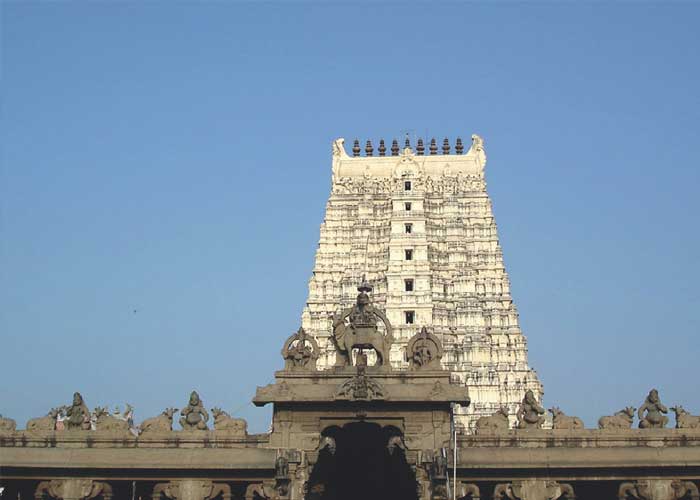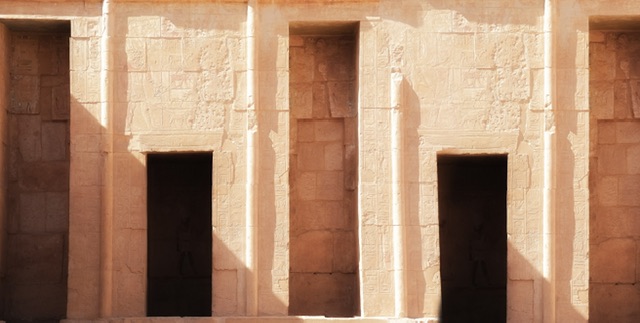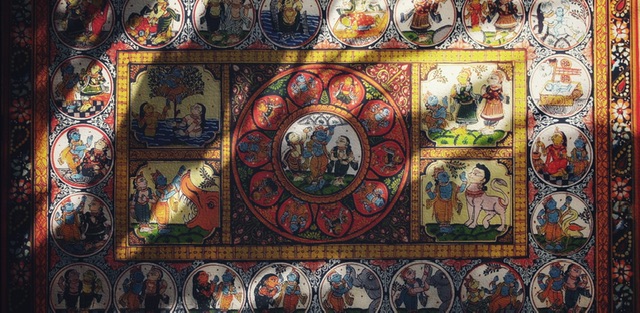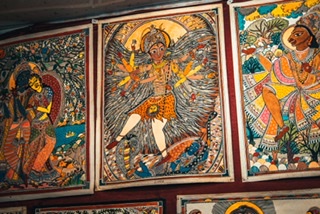Centuries ago Lord Shiv is said to have revealed himself to his true devotees in the form of a jyoti or a light. On their request for Him to reside by them for eternity, He installed Himself near them, as a linga, which is now known as Jyotirlinga.
In this series of articles we will take you through the 12 Jyotirlingas as described in the following Sanskrit shloka (Dwadasha Jyotirlingum Strota) –
सौराष्ट्रे सोमनाथं च श्रीशैले मल्लिकार्जुनम्।
उज्जयिन्यां महाकालमोङ्कारममलेश्वरम्॥
परल्यां वैद्यनाथं च डाकिन्यां भीमशङ्करम्।
सेतुबन्धे तु रामेशं नागेशं दारुकावने॥
वाराणस्यां तु विश्वेशं त्र्यम्बकं गौतमीतटे।
हिमालये तु केदारं घुश्मेशं च शिवालये॥
एतानिज्योतिर्लिङ्गानिसायं प्रातः पठेन्नरः।
सप्तजन्मकृतं पापं स्मरणेन विनश्यति॥
एतेशां दर्शनादेव पातकं नैव तिष्ठति।
कर्मक्षयो भवेत्तस् ययस्य तुष्टो महेश्वराः॥:
द्वादश ज्योतिर्लिंग स्तोत्रम्
What happens when beauty meets art and aesthetics meet mysticism? You get, Rameswaram- the southernmost of the 12 Jyotirlingas. Ornate corridors, towers and 36 theerthams (holy water sources) of which 22 are in the temple and are said to possess medicinal properties, are not the only fascinating aspects of this sacred space popularly referred to as the “Benaras of the South.” In fact, this island-temple town located on the Sethu coast of Tamilnadu (south-eastern), has water sources that are sweet and each have a distinct taste.
Architectural marvel
The temple, spreads over an area of 15 acres, has lofty gopurams, massive walls and a colossal Nandi. Rameswaram is also popular for the 4,000 feet long pillared corridor with over 4000 pillars, which is supposed to be the longest in the world. What is unique about this corridor is that the rock is not indigenous to the island and it was brought in from somewhere else into Tamil Nadu across the sea. The eastern Rajagopuram towers go up to a height of 126 feet and have nine levels. It is believed that until the 12th century, the ancient shrine was housed in a thatched hut and that the first ever masonry structure was built by Parakrama Bahu of Sri Lanka. Near the main temple of Rameshwar, there is a separate temple for Parvati known as Parvatavardhini temple. Besides this, there are temples of Santana Ganapati, Veerabhadra Hanuman, navagrahas,etc. At a distance of about nearly two kilometres from the main temple, there is Gandhamaadhan Mountain. In spite of being a sandy area, it is very green with a variety of flora. This is the Nandanavan of Rameshwar.
Chronicles of Rameshwaram
According to a popular legend, it was Lord Ram who installed the linga here. It was when Lord Ram was on his way to attack Ravan and he stopped to drink water on the seashore, there was a celestial proclamation, “You are drinking water without worshipping me.” Listening to this Lord Ram made a linga of sand and worshipped it and asked to be blessed so that he could vanquish Ravan. Lord Shiv blessed him accordingly. Lord Ram then requested Lord Shiv to reside eternally here so that mankind could benefit from it.
Six worship services are carried out each day at this temple, the first being at 5am.
Editors Note:
For the benefit of mankind AdidevMahadev Shiv blessed 12 shivlings with His Divine Light. The proof of Lord Shiv’s power is evident from the fact that in spite of being invaded by every possible community and race, all the 12 jyotirlingas still stand intact; each jyotirlinga blessing the created world with a unique energy. We shall make an honest attempt to delve into this aspect of
Hindu gods. A word of caution here, the jyotirlingas and any other place of pilgrimage are vortices of energy, places where rishis and munis have performed penance and concentrated the shakti of their tapobal. These are neither picnic spots nor wishing wells, and must only be visited for the purpose of sadhna, as guided by one’s Guru. These are places to open up the blocks in one’s sadhna and untie the bondages of maya. Visiting them with the desire for physical (maya) or entertainment only leads to a mismatch in energy of the visitor and the place, and may have adverse effects.The various calamities that happen at such places are ample proof of this. These places are for vairagya and moksh, not for fun and games.





